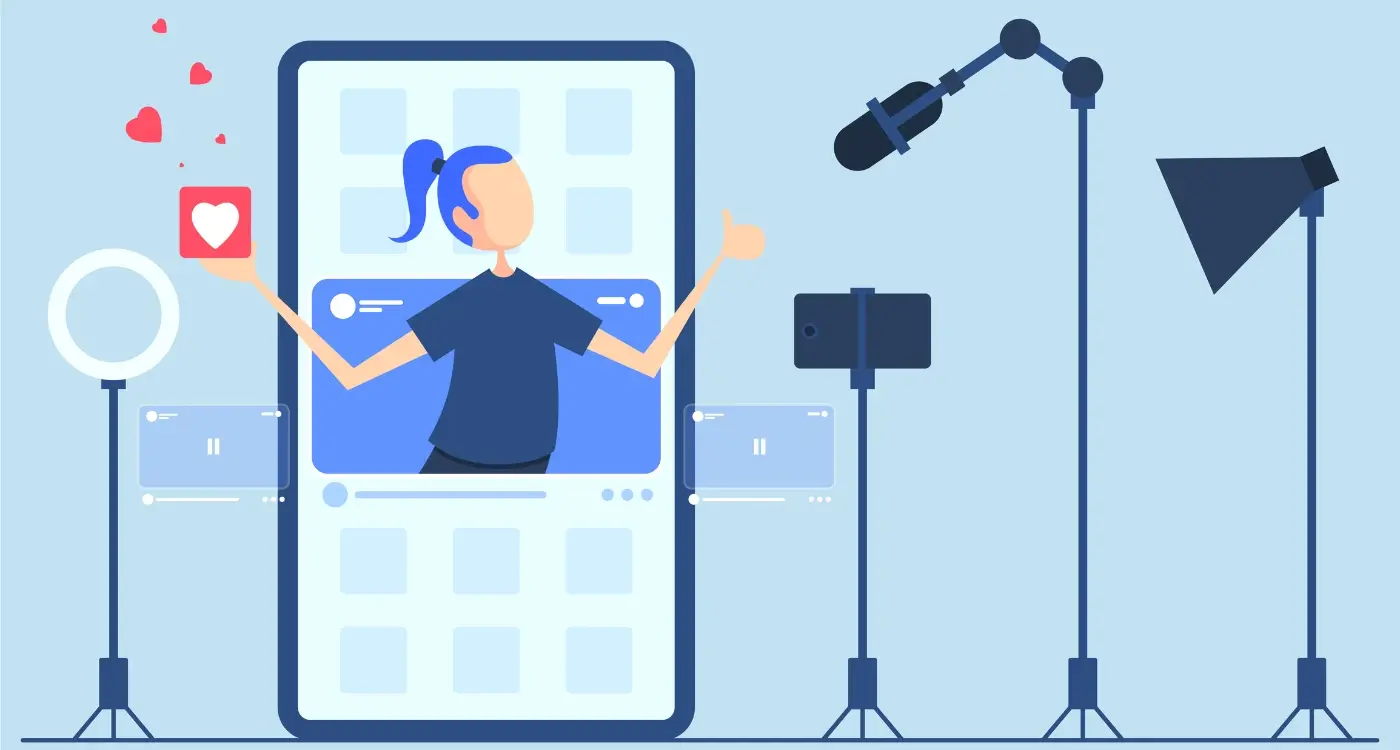What Are The Biggest Mistakes In App Influencer Marketing?
Did you know that 92% of consumers trust influencer recommendations over traditional advertising? Yet somehow, brands still manage to mess up their influencer campaigns spectacularly. I've worked with countless companies over the years who've blown their entire marketing budget on campaigns that barely moved the needle—and it's painful to watch.
The mobile app industry is particularly brutal when it comes to influencer marketing. You're not just asking people to buy a product; you're asking them to download something, give it storage space on their phone, and actually use it regularly. That's a much bigger ask than promoting a lipstick or a pair of trainers.
The difference between a successful app influencer campaign and a complete disaster often comes down to avoiding just a few key mistakes that most brands make repeatedly
What's frustrating is that these marketing pitfalls are entirely preventable. Most campaign failures happen because brands rush into partnerships without doing their homework, set unrealistic expectations, or choose influencers based on follower count rather than genuine engagement. The good news? Once you know what to avoid, influencer marketing can be one of the most effective ways to get your mobile app in front of the right people. Let's look at the biggest mistakes that are probably costing you downloads and revenue right now.
Choosing the Wrong Influencers for Your Mobile App
I've watched too many app campaigns fail because brands picked influencers based on follower count alone—and trust me, it's painful to see. The biggest mistake I see is when companies think a million followers automatically means success. Wrong! What matters is finding someone whose audience actually cares about your type of app; someone who fits naturally with your brand.
Getting this choice wrong can destroy your campaign before it even starts. I've seen fitness apps partner with food bloggers, productivity apps work with gaming streamers, and business apps collaborate with teenage lifestyle influencers. The results? Wasted budgets and zero downloads.
Red Flags When Selecting Influencers
- They have millions of followers but terrible engagement rates
- Their content style doesn't match your app's personality
- They've never posted about apps or tech before
- They work with direct competitors regularly
- Their audience demographics don't align with your target users
- They ask for payment upfront without discussing campaign details
The smart approach? Look for micro-influencers who genuinely use similar apps and have engaged communities. Their smaller but passionate audiences often convert better than massive but disconnected followings. Quality beats quantity every single time in influencer marketing.
Setting Unrealistic Campaign Goals and Expectations
I've watched countless mobile app campaigns crash and burn because someone in a meeting room decided they wanted a million downloads in their first week. Sounds familiar? The problem isn't ambition—it's the complete disconnect from reality that leads to these marketing pitfalls.
When you're planning an influencer campaign for your mobile app, you need to understand what's actually achievable. A micro-influencer with 50,000 followers won't magically deliver 100,000 app installs. The maths just doesn't work that way. Most influencer campaigns see conversion rates between 1-3%, and that's on a good day with the right audience match.
Common Unrealistic Expectations
- Expecting viral growth from a single post
- Setting download targets without considering conversion rates
- Assuming all followers will engage with your content
- Believing bigger influencers always mean better results
- Thinking one campaign will solve all your user acquisition problems
The key is setting goals that stretch your team without breaking your budget or morale. Start with smaller, measurable targets—maybe 500 quality downloads from a campaign rather than 50,000. Build your expectations around real data, not wishful thinking.
Set campaign goals based on the influencer's historical performance data, not their follower count. Ask for case studies from similar app campaigns before committing to any targets.
Remember, sustainable growth beats explosive campaign failures every single time. Your app deserves a strategy built on realistic foundations, not fantasy numbers that lead to disappointment and wasted marketing spend.
Poor Communication Between Brands and Influencers
I've worked with countless brands over the years, and one pattern keeps repeating itself—terrible communication with influencers. It's honestly painful to watch sometimes. You'd think after spending thousands on an influencer campaign, brands would nail the basics like clear briefs and regular check-ins. But no, they often treat influencers like vending machines where you put money in and content magically appears.
The problems start early. Brands send vague briefs that say things like "just make it fun" or "show people using our app." What does that even mean? Influencers aren't mind readers; they need specific guidance on your app's key features, target audience, and campaign goals. When communication breaks down, you end up with content that misses the mark completely.
Common Communication Failures
- Sending unclear or incomplete campaign briefs
- Not responding to influencer questions promptly
- Changing requirements halfway through the campaign
- Failing to provide proper app access or demo accounts
- Not setting clear deadlines and approval processes
The fix is simpler than you think. Create detailed briefs, set up regular check-ins, and treat influencers as creative partners rather than just another advertising channel. When communication flows both ways, campaigns actually work.
Ignoring Audience Mismatch and Engagement Quality
I've watched countless mobile app marketing campaigns crash and burn because brands got caught up in vanity metrics. You know what I mean—those influencers with hundreds of thousands of followers who look impressive on paper but whose audiences couldn't care less about your app. It's one of the most common marketing pitfalls I see, and frankly, it's completely avoidable.
The problem isn't just about follower count; it's about engagement quality. An influencer might have 100,000 followers, but if only 500 of them actually engage with content and none of them fit your target demographic, you've just wasted your budget. I've seen brands partner with lifestyle influencers to promote productivity apps, only to discover their audience consists mainly of teenagers interested in fashion—not busy professionals looking for productivity solutions.
The biggest mistake isn't choosing the wrong influencer; it's not understanding their audience well enough to know they're wrong
Real engagement matters more than reach. Look for influencers whose followers actually comment meaningfully, share content, and take action. Check if their audience demographics align with your app's target users. A smaller, engaged audience that matches your ideal user profile will always outperform a massive, disinterested one. These campaign failures happen because brands skip the research phase and focus on impressive-looking statistics instead of meaningful connections.
Failing to Track Performance and Campaign Metrics
I've seen countless brands launch influencer campaigns with great enthusiasm, only to scratch their heads when asked about the results. It's like baking a cake and never checking if it actually tastes good—you might think you've done everything right, but without proper measurement, you're flying blind.
The biggest mistake here isn't just forgetting to track metrics; it's not knowing which metrics actually matter for your app. Downloads are great, but what about user retention? An influencer might drive thousands of installs, but if those users delete your app within a week, you've essentially paid for nothing.
What You Should Actually Be Measuring
Smart app marketers focus on metrics that tell the whole story, not just the opening chapter. Here's what really matters:
- Cost per install (CPI) and cost per acquisition (CPA)
- User retention rates at 1, 7, and 30 days
- In-app engagement and session duration
- Conversion rates for paid features or subscriptions
- User lifetime value (LTV) from influencer traffic
Without tracking these properly, you can't improve your campaigns or justify your marketing spend. I always tell clients that good data beats good guesses every single time—and in influencer marketing, there's no room for guesswork when budgets are on the line.
Creating Content That Doesn't Match Your App's Brand
I've watched countless mobile app marketing campaigns fall flat because the content felt completely disconnected from what the app actually does. It's one of those marketing pitfalls that seems obvious when you point it out, but happens more often than you'd think. When your influencer posts something that doesn't reflect your app's personality, values, or target audience, you're basically throwing money away.
Let's say your app is a serious productivity tool for professionals. Having an influencer create silly dance videos to promote it just won't work—no matter how many followers they have. The content needs to match not just your app's function, but its entire brand identity. Your audience expects consistency, and when they don't get it, they switch off.
Why Brand Consistency Matters
People download apps based on trust and understanding. If your influencer content shows one thing but your app delivers another, you've created confusion. This leads to poor download rates, negative reviews, and wasted marketing spend. The most successful campaigns I've seen maintain perfect alignment between the influencer's content style and the app's core message.
Before approving any influencer content, ask yourself: "Does this look like something my app would create?" If the answer is no, request changes until it feels authentic to your brand.
Campaign failures often stem from this fundamental disconnect. Take time to create clear brand guidelines for influencers and review all content before it goes live.
Budget Allocation Mistakes That Lead to Campaign Failures
I've watched countless brands throw money at influencer campaigns like confetti at a wedding—only to wonder why their app downloads didn't budge. The truth is, most budget allocation mistakes stem from not understanding where your money actually makes an impact.
The biggest error I see? Brands who spend 80% of their budget on one mega-influencer and leave pennies for everything else. Yes, that million-follower creator looks impressive, but what happens when their audience doesn't match your target users? You've blown your entire budget on the wrong people.
Common Budget Blunders That Kill Campaigns
- Putting all funds towards influencer fees whilst ignoring content production costs
- Choosing quantity over quality—hiring 50 micro-influencers without proper vetting
- Forgetting to budget for campaign management and tracking tools
- Not setting aside funds for paid promotion to boost organic posts
- Skipping A/B testing different influencer tiers due to "budget constraints"
Smart budget allocation means spreading your spend across different influencer tiers, leaving room for content creation, and always—and I mean always—keeping 20% aside for scaling what works. The brands that succeed treat their influencer budget like a portfolio investment, not a single bet on one horse.
Conclusion
After working with hundreds of mobile app developers over the years, I can tell you that influencer marketing doesn't have to be a minefield of campaign failures. Yes, there are plenty of marketing pitfalls waiting to trip you up—but now you know what they are and how to avoid them.
The biggest lesson I've learned? Most app influencer marketing mistakes come down to rushing the process. Brands want results yesterday, so they skip the research, ignore the data, and hope for the best. That's like building a mobile app without testing it first—you're asking for trouble.
Every successful campaign I've seen follows the same pattern: careful influencer selection, realistic goals, clear communication, and proper tracking from day one. It's not rocket science, but it does require patience and attention to detail.
The good news is that when you get it right, influencer marketing can transform your app's growth. I've watched unknown apps gain thousands of genuine users through well-planned campaigns. The key is learning from these common mistakes before they cost you time and money.
Start small, measure everything, and remember that authentic connections between influencers and audiences will always beat flashy campaigns with mismatched partnerships. Your mobile app deserves marketing that works.
Share this
Subscribe To Our Learning Centre
You May Also Like
These Related Guides

How Long Should My App Influencer Marketing Campaign Run?

How Do I Measure If My App Influencer Campaign Actually Worked?



